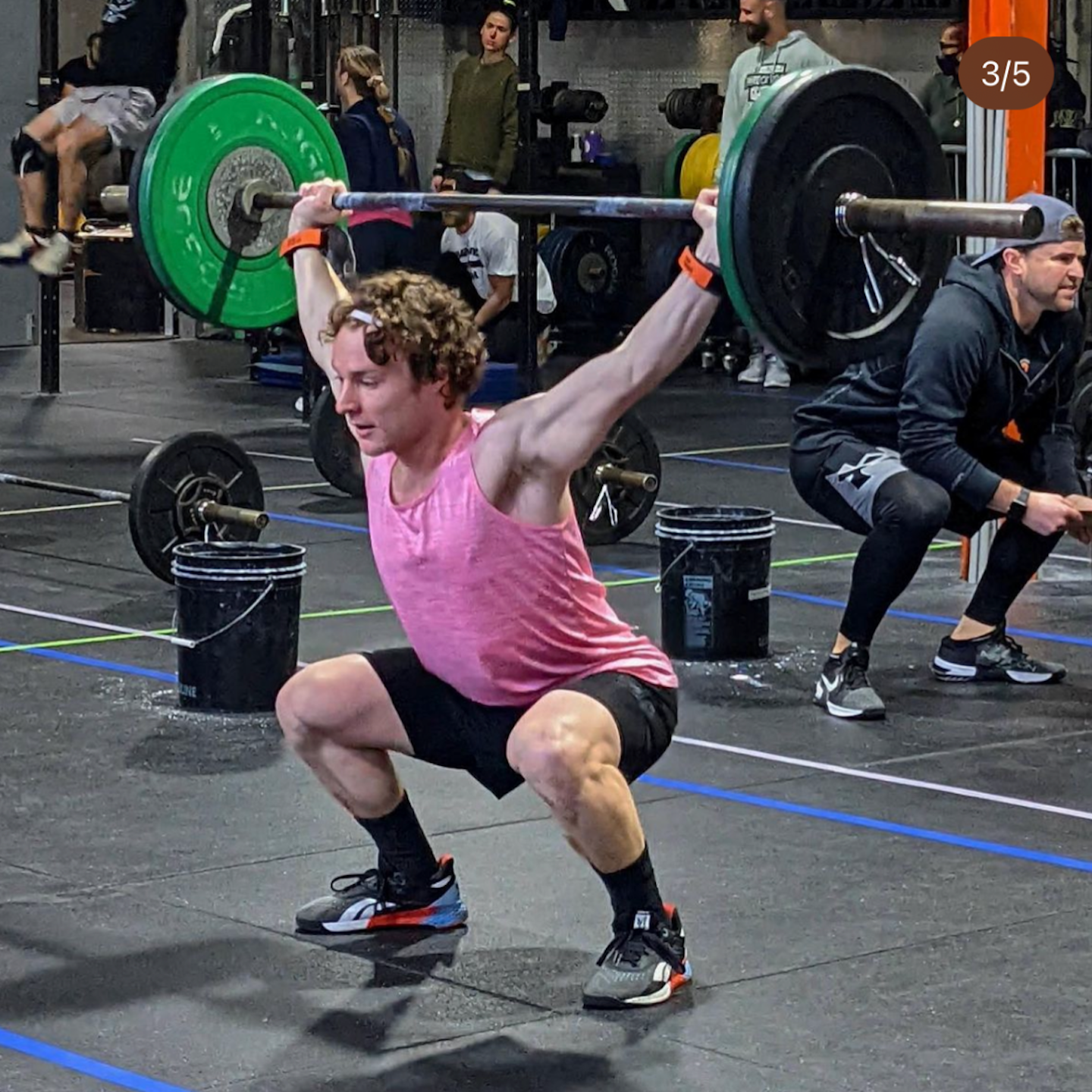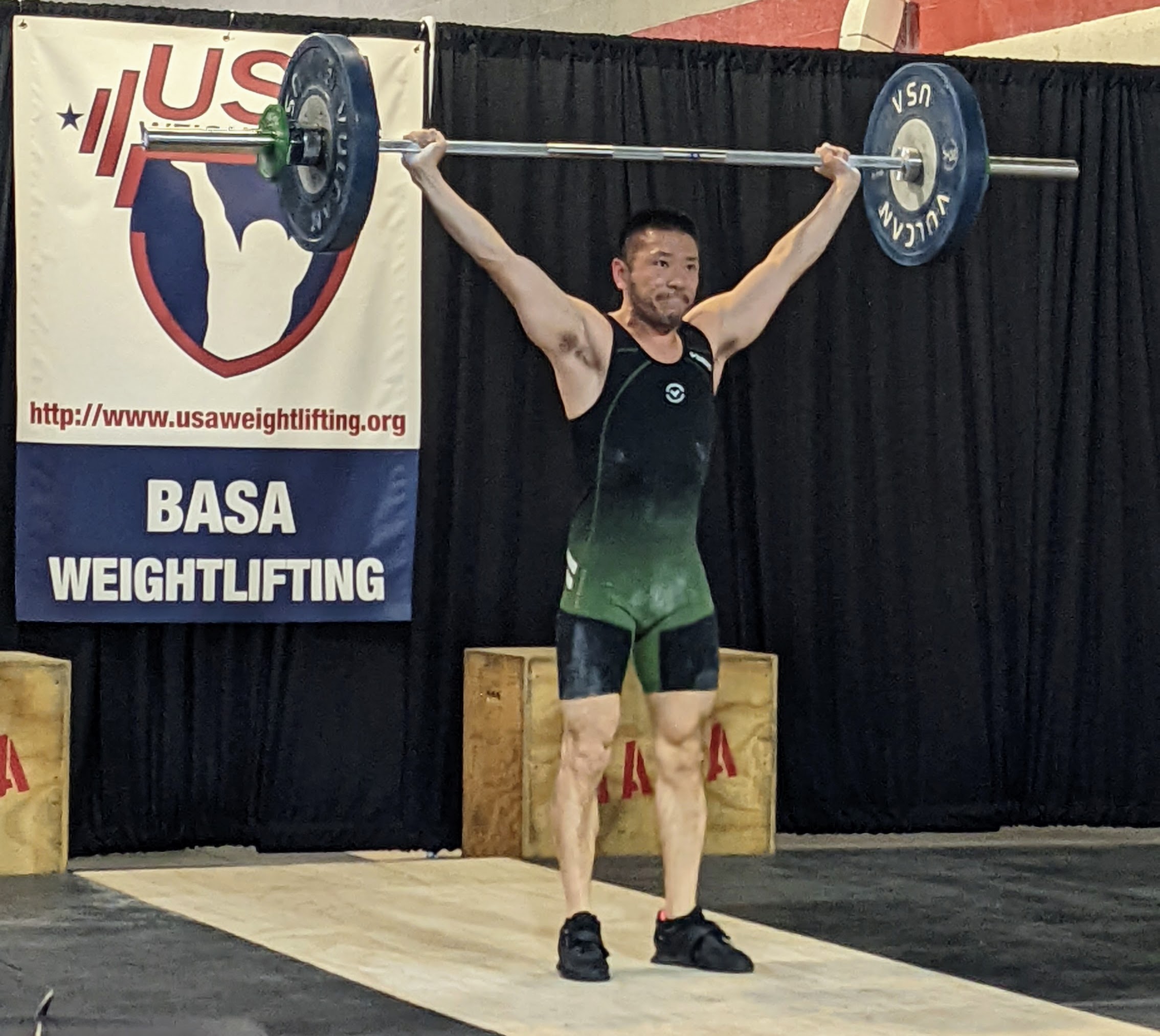
In this comprehensive guide, we will explore various exercises, stretches, and techniques specifically tailored to help CrossFit athletes maintain strong, stable, and healthy shoulders.
Key Takeaways:
- Shoulder prehab is crucial for CrossFit athletes: Engaging in shoulder prehab exercises can help prevent injuries, improve shoulder stability, and enhance performance in CrossFit workouts.
- Include a variety of movements: Incorporating a range of exercises such as external rotations, scapular retractions, and shoulder mobility drills can target different muscle groups and improve overall shoulder health.
- Consistency is key: Regularly performing shoulder prehab exercises, focusing on proper form, and gradually increasing intensity can help build strength, prevent imbalances, and maintain optimal shoulder function for CrossFit athletes.
The Anatomy of the Shoulder
Bones and Joints Involved
Some of the key bones and joints involved in the shoulder complex include the clavicle (collarbone), scapula (shoulder blade), and humerus (upper arm bone). The shoulder joint itself is known as the glenohumeral joint, where the head of the humerus fits into the shallow socket of the scapula called the glenoid.
An intricate network of ligaments and cartilage surrounds the shoulder joint, providing stability and support during movements. Additionally, the acromioclavicular (AC) joint, where the clavicle meets the acromion process of the scapula, plays a crucial role in shoulder function and mobility.
Muscles and Tendons That Support the Shoulder
These muscles play a vital role in stabilizing the shoulder during dynamic movements like lifting, pushing, and pulling. This intricate system of muscles and tendons works together to ensure proper function and alignment of the shoulder joint. In addition to the rotator cuff muscles, larger muscles like the deltoid, pectoralis major, and latissimus dorsi also contribute to shoulder stability and mobility.
How Shoulder Injuries Occur in CrossFit
To prevent shoulder injuries in CrossFit, it is essential to understand how they commonly occur. Overuse, improper technique, and inadequate mobility can all contribute to shoulder injuries in CrossFit athletes. Movements like overhead presses, snatches, and muscle-ups require significant shoulder mobility and strength, making them susceptible to injuries if performed incorrectly or excessively.
Muscles surrounding the shoulder joint can become imbalanced or strained due to repetitive movements or poor biomechanics, leading to conditions such as rotator cuff tendinopathy, impingement syndrome, or even tears in the tendons or ligaments. Proper warm-up, mobility work, and technique refinement are essential in preventing shoulder injuries in CrossFit athletes.
Types of Shoulder Prehab Exercises
Keep your shoulders healthy and strong with a variety of shoulder prehab exercises. These exercises can help prevent injuries and improve performance in CrossFit athletes. Incorporating a mix of dynamic warm-ups, rotator cuff strengthening, scapular stability workouts, and mobility and flexibility drills into your training routine can help you maintain optimal shoulder health.
| Dynamic Warm-ups | Rotator Cuff Strengthening |
| Scapular Stability Workouts | Mobility and Flexibility Drills |
| Internal and External Rotations | Shoulder Dislocations |
| Face Pulls | Wall Slides |
| YTWL Exercises | Doorway Stretches |
Dynamic Warm-ups
Dynamic warm-ups help increase blood flow to the muscles, improve range of motion, and activate the stabilizing muscles around the shoulder joints. Perform exercises like arm circles, shoulder rolls, and shoulder swings to get your shoulders primed for action.
After a dynamic warm-up, you'll feel more prepared to tackle the intense training ahead. These exercises can also help reduce the risk of injury during your CrossFit sessions.
Rotator Cuff Strengthening
Warmups for the rotator cuff muscles are crucial for shoulder stability and strength. By performing specific exercises that target the rotator cuff muscles, such as internal and external rotations, you can enhance the stability of your shoulder joints. This will not only improve your performance in CrossFit but also help prevent injuries.
Exercises like face pulls and YTWL exercises can also be beneficial for maintaining proper shoulder mechanics and preventing imbalances that can lead to pain or injury.
Any imbalances or weaknesses in the rotator cuff muscles can compromise the stability of the shoulder joint and increase the risk of injury. By incorporating rotator cuff strengthening exercises into your prehab routine, you can address these weaknesses and improve your overall shoulder health.
Scapular Stability Workouts
By strengthening the muscles that control the movement of the shoulder blades, you can improve overall shoulder stability and reduce the risk of injury. Workouts like wall slides and doorway stretches can help improve scapular mobility and stability.
Adding scapular stability workouts to your shoulder prehab routine can also help improve your posture, enhance shoulder mechanics, and optimize performance in CrossFit movements like overhead presses and pull-ups.
Any weaknesses or dysfunctions in the muscles surrounding the scapula can lead to poor shoulder mechanics and an increased risk of injury. By incorporating scapular stability workouts into your training regimen, you can address these issues and promote optimal shoulder health for CrossFit performance.
Mobility and Flexibility Drills
Exercises like shoulder dislocations and doorway stretches can target tight areas and improve shoulder mobility. Performing mobility and flexibility drills as part of your cool-down routine can help loosen tight muscles, alleviate post-workout soreness, and promote faster recovery. Including these drills in your training program can help you maintain optimal shoulder health and performance in CrossFit.
Factors to Consider for Effective Shoulder Prehab
Not all shoulder prehab routines are created equal. To maximize the effectiveness of your shoulder prehab program, there are several important factors to consider. By taking these factors into account, you can tailor your prehab routine to suit your individual needs and goals.
Individual Fitness Levels and Goals
To ensure that your shoulder prehab program is effective, it is crucial to consider your current fitness level and the specific goals you have for your CrossFit training. Someone new to CrossFit may require a different prehab routine than a seasoned athlete. Tailoring your prehab exercises to align with your fitness level and goals can help you prevent injuries and improve your shoulder strength and stability.
Knowing where you stand in terms of fitness and what you aim to achieve through your CrossFit training will guide you in selecting the appropriate shoulder prehab exercises. Whether you're working towards increasing your overhead press strength or preventing shoulder impingements, your prehab routine should be designed to support these objectives.
Identifying Potential Weaknesses
Effective shoulder prehab starts with identifying potential weaknesses in your shoulder girdle muscles and mobility. By assessing your range of motion, stability, and any past or current shoulder issues, you can pinpoint areas that require attention in your prehab routine. Common weaknesses in CrossFit athletes include imbalances between the internal and external rotator cuff muscles, inadequate scapular stability, and limited thoracic mobility.
Consider working with a sports therapist or physical therapist to conduct a comprehensive assessment of your shoulder strength and mobility. This evaluation can help you target specific weaknesses and address them through targeted prehab exercises. By addressing these weaknesses, you can enhance your shoulder function and reduce the risk of injuries during CrossFit workouts.
Balancing Prehab with CrossFit Training
Factors such as the volume and intensity of your CrossFit training should be taken into consideration when designing your shoulder prehab program. While prehab exercises are essential for injury prevention, overdoing them can lead to fatigue and compromise your performance in CrossFit workouts. Striking a balance between prehab exercises and your regular training is crucial for optimizing your shoulder health and overall performance.
Any modifications to your CrossFit training or shoulder prehab routine should be made gradually and with careful monitoring of how your body responds. It's important to listen to your body's signals and adjust your prehab program as needed to avoid overtraining or neglecting key areas of shoulder stability and mobility.
Understanding Load and Recovery Time
Understanding how much load your shoulders can handle during CrossFit workouts and allowing them enough time to recover between sessions is vital for preventing overuse injuries. Gradually increasing the intensity and volume of your prehab exercises while ensuring adequate recovery will help you build shoulder strength and resilience over time.
With proper load management and attention to recovery, you can gradually increase the demands placed on your shoulders through both prehab exercises and CrossFit training. By understanding the importance of load and recovery time, you can optimize your shoulder prehab routine and minimize the risk of overuse injuries that may hinder your progress in CrossFit.
Step-by-Step Shoulder Prehab Routine
Consistency is key when it comes to prehabilitation, so incorporating these exercises into your regular training schedule can help prevent injuries and improve shoulder health.
| Daily Warm-up Exercises | Progressive Overload Principles in Prehab |
Warm-upStart your prehab routine with daily warm-up exercises to prepare your shoulders for the workout ahead. This can include arm circles, shoulder rotations, scapular retractions, and band pull-aparts to activate the muscles and increase blood flow to the shoulder joints. Dynamic stretches like shoulder dislocations with a resistance band and thoracic spine rotations can also help improve mobility and flexibility in the shoulder complex. |
ExercisesAs you progress in your shoulder prehab routine, it's essential to apply progressive overload principles to continue challenging your muscles and promoting strength and stability. This can involve increasing resistance, repetitions, or intensity of the exercises over time. |
Step-by-Step Progressive Overload Principles in Prehab
Now, let's research deeper into the progressive overload principles in prehab. By gradually increasing the demands placed on your shoulder muscles, you can stimulate adaptation and improvement in strength, stability, and resilience. This can help reduce the risk of overuse injuries and enhance performance in CrossFit movements that involve the shoulders.
Integrating Prehab into CrossFit Workouts
An effective way to ensure the sustainability of your shoulder health is by integrating prehabilitation exercises into your regular CrossFit workouts. Before stepping into the high-intensity WODs, incorporating specific shoulder prehab exercises can help activate the stabilizing muscles and prime your shoulders for the demands of the session.
Prehab movements like external and internal rotations, face pulls, and YTWL exercises can be seamlessly integrated into your warm-ups or cool-downs to maintain shoulder health and function throughout your CrossFit training.
Prehab Information on Monitoring and Adjusting the Prehab Regimen
Step-by-Step Monitoring and Adjusting the Prehab Regimen
Integrating monitoring and adjusting strategies into your shoulder prehab regimen is crucial for long-term success. Regularly reassessing your shoulder health, addressing any imbalances or weaknesses, and modifying the exercises accordingly can help prevent plateaus and ensure continued progress in your prehabilitation journey.
Tips for Maximizing Shoulder Prehab Benefits
Despite the importance of shoulder prehab for CrossFit athletes, maximizing its benefits requires more than just going through the motions. To get the most out of your prehab routine, consider the following tips:
- Focus on proper technique and form in all exercises
- Incorporate a variety of exercises to work different muscle groups
- Pay attention to your nutrition and rest for optimal recovery
- Stay consistent with your prehab routine for long-term benefits
Proper Technique and Form Considerations
Ensuring that you perform each exercise with proper technique and form is crucial to prevent injury and maximize the benefits of your prehab routine. Pay attention to your body positioning, range of motion, and any cues provided by your coach or physical therapist.
On top of that, listen to your body. If you feel any unusual discomfort or pain during an exercise, stop immediately and reassess your form. It's better to correct your technique early on than to risk exacerbating an existing shoulder issue.
Incorporating Variety in Exercises
By incorporating a variety of exercises into your prehab routine, you can target different muscle groups and movement patterns, ultimately leading to a more well-rounded shoulder stability. Plus, mixing up your exercises can prevent overuse injuries and keep your workouts engaging.
Knowing when to switch things up is just as important as keeping a routine. Consider rotating between different types of exercises, such as resistance band work, bodyweight movements, and stability exercises, to ensure you're hitting all the necessary areas of the shoulder complex.
The Role of Nutrition and Rest
Proper nutrition, including an adequate intake of protein, vitamins, and minerals, can support muscle growth and repair, while sufficient rest allows your body to recover and adapt to your training.
The benefits of a well-balanced diet and ample rest can extend beyond your prehab routine and positively impact your overall performance in CrossFit. So, pay attention to what you eat and make sure you're allowing your muscles to recover adequately between workouts.
Staying Consistent with Your Prehab Routine
By staying consistent with your prehab routine, you can build strength, stability, and resilience in your shoulders over time. Incorporating prehab exercises into your regular training schedule can help you maintain a healthy shoulder complex and prevent injuries down the line.
Your commitment to consistency will pay off in the long run. Treat your prehab routine as an essential part of your training program, just like you would your CrossFit workouts, and you'll set yourself up for success in the sport and beyond.
Pros and Cons of Shoulder Prehab for CrossFit Athletes
After deciding to incorporate shoulder prehab into your CrossFit routine, it is essential to understand both the advantages and potential drawbacks associated with this preventive measure. By weighing these factors, athletes can make informed decisions about the most effective ways to protect their shoulders and optimize their performance.
Advantages of Shoulder Prehab
Consistent shoulder prehab exercises can help CrossFit athletes enhance shoulder stability, strength, and mobility. By targeting the small stabilizing muscles around the shoulder joint, prehab can reduce the risk of injuries such as rotator cuff tears and impingement. Improved shoulder health can also lead to better performance in overhead movements like snatches and overhead squats.
Additionally, incorporating shoulder prehab into your routine can help identify and address any imbalances or weaknesses early on, preventing them from developing into more serious issues. By proactively addressing potential areas of weakness, athletes can improve their overall shoulder health and reduce the likelihood of being sidelined due to injuries.
Potential Drawbacks and How to Counter Them
Drawbacks of shoulder prehab may include a time commitment to performing additional exercises, as well as the need for consistency in order to see results. Athletes may also experience frustration if they do not see immediate improvements in shoulder strength or mobility. To counter these drawbacks, it is essential to incorporate prehab exercises into routine warm-ups or cool-downs and track progress over time to stay motivated.
Potential setbacks such as overtraining or incorrect form during prehab exercises can also occur. Athletes should consult with a coach or physical therapist to ensure they are performing the exercises correctly and to prevent overuse injuries. By receiving proper guidance and feedback, athletes can minimize the risks associated with shoulder prehab and maximize its benefits.
Potential: In some cases, athletes may be reluctant to prioritize shoulder prehab over other aspects of their training, such as strength or conditioning. However, neglecting shoulder health can have long-term consequences that may impact overall performance and lead to injuries. It is important to recognize the value of preventive measures like shoulder prehab in maintaining longevity in athletic endeavors.
Weighing Prehab Against Other Protective Measures
With the multitude of protective measures available to CrossFit athletes, it is crucial to consider how shoulder prehab fits into the bigger picture. While techniques like taping, bracing, or modifying movements can provide immediate support, shoulder prehab offers a long-term solution by strengthening the muscles and structures surrounding the shoulder joint. When combined with other protective measures, shoulder prehab can create a comprehensive approach to injury prevention and performance enhancement.
Other: Athletes should view shoulder prehab as an essential component of their training regimen, rather than an optional add-on. By prioritizing shoulder health and incorporating prehab exercises consistently, athletes can reduce the risk of shoulder injuries and improve their overall performance in CrossFit and other athletic pursuits.
Maintaining Shoulder Health Long-Term
Periodic Assessment and Program Review
Long-Term, it is crucial for CrossFit athletes to incorporate periodic assessments and program reviews into their training routines to maintain optimal shoulder health. By regularly assessing movement patterns, identifying weaknesses, and reviewing exercise programs, athletes can make necessary adjustments to prevent overuse injuries and ensure long-term shoulder stability.
These assessments can include a range of motion tests, strength evaluations, and functional movement screenings to track progress and detect any issues early on. By continuously monitoring and updating training programs based on these assessments, athletes can address weaknesses and imbalances before they become more serious problems.
Adjusting Training Intensity and Volume
Program adjustments are essential for the long-term shoulder health of CrossFit athletes. As training intensity and volume increase, the risk of shoulder injuries also rises. It is crucial to listen to your body and recognize signs of fatigue or overtraining. Adjusting the intensity and volume of workouts based on individual recovery rates and performance is key to preventing shoulder issues.
Shoulder prehab exercises can be modified to accommodate changing training demands and ensure the shoulder muscles are adequately prepared for the workload. By incorporating deload weeks, active recovery sessions, and rest days into the training schedule, athletes can give their shoulders the time they need to recover and adapt to the stress of CrossFit training.
The Importance of Cross-Training and Diversification
Cross-training and diversification of exercises and movements play a vital role in maintaining shoulder health for CrossFit athletes in the long run. Engaging in a variety of activities such as swimming, yoga, Pilates, or mobility work can help prevent overuse injuries and improve overall shoulder strength and stability. By incorporating different movement patterns and training modalities, athletes can reduce the risk of repetitive strain on the shoulder joints.
With a well-rounded approach to training that includes a mix of CrossFit workouts, accessory exercises, and alternative activities, athletes can enhance their shoulder health and performance while minimizing the risk of overuse injuries. Embracing diversity in training not only benefits the shoulders but also contributes to overall athleticism and longevity in the sport of CrossFit.
Conclusion
Shoulder prehabilitation is crucial for CrossFit athletes to prevent injuries and improve performance. By incorporating a well-rounded prehab routine that includes mobility work, stability exercises, and strengthening movements, athletes can ensure that their shoulders are supported and protected during intense workouts. Consistency and proper form are key to reaping the benefits of shoulder prehab, so make sure to prioritize this aspect of your training regimen to stay healthy and strong in your CrossFit journey.


